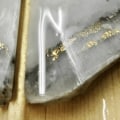Exchange-traded funds backed by precious metals such as gold and silver are considered collectibles for tax purposes, according to accountants. That means they have a maximum federal tax rate of 28% on long-term capital gains. Stocks, bonds and other investments generally have a maximum rate of 20% on earnings. The Internal Revenue Service (IRS) considers physical holds of precious metals such as gold, silver, platinum, palladium and titanium to be capital assets specifically classified as collectibles.
For those looking for more control over their investments, Gold IRA home storage is an option that allows investors to store their gold in a secure location of their choice. Holdings of these metals, regardless of their shape, such as bullion coins, ingot ingots, rare coins or ingots, are subject to capital gains tax. Capital gains tax is only due after the sale of such shares and if the shares were held for more than one year. The IRS taxes capital gains on gold in the same way it does on any other investment asset. However, if you have purchased physical gold, you are likely to owe a higher tax rate of 28% as a collector's item.
Avoid investing in physical metal and you can minimize your capital gains taxes at the ordinary long-term capital gains rate. And when possible, keep your gold investments for at least one year before selling them to avoid higher tax rates. Holdings in precious metals such as gold, silver or platinum are considered capital assets and therefore capital gains may apply. When it comes to taxes, the IRS classifies precious metals as collectibles and therefore may be taxed at the maximum rate of capital gains raising of 28 percent.
While initially gold was not allowed in IRAs, the most common forms of investment in gold, with the exception of the Krugerrands (South African gold coins), can be purchased within an IRA. Gold and silver bars may attract unwanted attention or require special statements for monetary instruments, but a gold necklace is, well, just another gold necklace. In the case of brokerage accounts, an investment in gold mutual funds is more likely to offer a higher after-tax return than gold coins or a gold futures ETF. A gold ETN does not physically hold gold, but at maturity it produces a return equivalent to that of an investment in gold.
While secondary investments in gold, such as gold mining stocks, mutual funds, ETFs or TNCs, may generate lower returns before taxes, after-tax returns may be more attractive. Like all investments in an IRA, profits from gold sold within an IRA are not taxed until the cash is distributed to the taxpayer, and distributions are taxed at the taxpayer's marginal tax rate. Gold exchange-traded bonds (ETN) are debt securities in which the rate of return is linked to an underlying gold index. Gold exchange-traded funds (ETFs) offer an alternative to buying gold bars and are traded like stocks.
Emma and Lucas's results, shown in Figure 3, indicate that the after-tax returns on investments in gold in a traditional IRA far exceed those of investments in gold in a brokerage account or a Roth IRA. Gold futures contracts are an agreement to buy or sell at a specific price, place and time, a standard quality and quantity of gold. With a little planning, investors can preserve a greater part of their return in gold by investing in gold that receives the LTCG treatment or investing in an IRA. Comparisons between hypothetical taxpayers generally indicate a significantly higher after-tax rate of return for any form of gold held in a traditional IRA than in a brokerage account and slightly higher than that of a Roth IRA.
Lucas' annualized after-tax return increases by more than two percentage points if you use a traditional IRA for your investment in gold mutual funds and more than three percentage points if you use a brokerage account if you use a traditional IRA for your investment in gold coins. The typical approach to investing in gold futures contracts is by buying gold futures (ETFs or ETNs). . .



